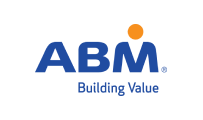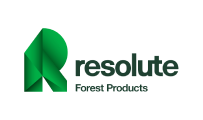In a political environment where climate regulation is being rolled back, U.S. corporations are taking sustainability into their own hands—and investing heavily in software to help them do it. As the Trump administration signals a step away from robust climate action, many businesses are turning toward digital tools to future-proof their operations. The surge in adoption of corporate sustainability software reflects a broader trend: while federal policy may be loosening, the demand for accountability and transparent ESG (Environmental, Social, Governance) practices is only intensifying.
Deregulation Sparks Private Sector Innovation
During his previous term, Donald Trump rolled back more than 100 environmental rules. If his current campaign rhetoric becomes policy again, we can expect a similar trajectory. In turn, this seems to create a vacuum—one that businesses feel increasingly compelled to fill themselves.
With global stakeholders, investors, and customers demanding climate responsibility, corporations are seeking out sustainability platforms to track and report environmental performance. These tools help meet internal ESG goals and maintain compliance with international frameworks like the EU’s Corporate Sustainability Reporting Directive (CSRD) or the SEC’s climate disclosure rules.
Why Software is Central to Corporate ESG Strategies
Companies are not just using sustainability software as a compliance checkbox. It has become a strategic tool to measure carbon footprints, manage energy consumption, and ensure transparency in supply chains. Platforms like Microsoft Cloud for Sustainability, Persefoni, and Envizi are leading the charge by offering AI-driven data insights, real-time dashboards, and automated reporting.
Adopting this software helps corporations:
-
Streamline ESG data collection
-
Identify inefficiencies in operations
-
Set and monitor emissions reduction targets
-
Prepare for changing regulatory landscapes
Climate Policy and the Corporate Risk Matrix
Political uncertainty doesn’t eliminate climate risk—it increases it. In the absence of consistent federal policy, businesses must build their own safeguards. Sustainability software allows for scenario modeling, carbon pricing analysis, and climate risk forecasting, turning ambiguity into actionable insights.
Moreover, investors are watching. The rise of ESG-focused funds means companies that can’t demonstrate sustainability readiness risk falling behind. According to BlackRock, ESG-integrated portfolios have seen stronger returns over time—a trend that is pressuring boardrooms to act, regardless of who sits in the White House.
Technology Filling the Policy Gap
With fewer federal mandates, software platforms are stepping up to define best practices. These tools don’t just track emissions—they educate teams, benchmark performance, and offer templates aligned with standards such as GRI, SASB, and TCFD.
The shift to digital sustainability solutions is also creating a new job market. Demand for sustainability professionals who are fluent in ESG software, climate data analytics, and regulatory reporting is growing. For U.S. professionals, upskilling in these areas is becoming essential.
A Future-Proof Investment
If a second Trump term brings more regulatory rollbacks, companies will face increased scrutiny from global partners and markets that maintain strong climate commitments. Sustainability software offers a shield—ensuring businesses stay competitive and compliant even when national policy wavers.
It’s no longer a question of whether to invest in ESG technology, but how quickly companies can integrate it across operations.
Conclusion: Digital Tools for a Dynamic Climate Landscape
The relationship between climate policy and corporate sustainability software is growing tighter. As government signals shift, the private sector is investing in tools that ensure long-term resilience and credibility.
For professionals in sustainability roles, this signals a clear directive: understand the software, stay ahead of the policy curve, and lead digital ESG transformation from within.
To lead in this evolving landscape, sustainability professionals must stay ahead of both policy shifts and technological trends. The Certified Sustainability Practitioner Program – Leadership Edition 2025 offers the critical training needed to master ESG tools, navigate changing regulations, and implement impactful strategies. This globally recognized certification equips leaders with the skills to turn sustainability ambitions into measurable results.







